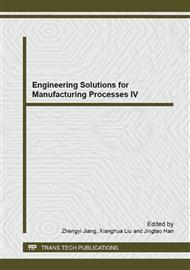[1]
Massalin, H.: Superoptimizer: A look at the smallest program. In: ASPLOS-II: Proceedings of the Second International Conference on Architectural Support for Programming Languages and Operating Systems, pp.122-126. IEEE Computer Society Press, Los Alamitos (1987).
DOI: 10.1145/36206.36194
Google Scholar
[2]
Krumme, D.W. and Ackley, D.H. A practical method for Code Generation based on exhaustive search. In: Proceedings of the ACM SIGPLAN' 82 Symposium on Compiler Construction, pages 185-196. ACM/SIGPLAN, June, (1982).
DOI: 10.1145/800230.806994
Google Scholar
[3]
Matthas Jacob, Mariusz H. Jakubowski, Prasad Naldurg etc.: The Superdiversifier: Peephole Individualization for Software Protection. In: K. Matsuura and E. Fujisake (Eds. ): IWSEC 2008, LNCS 5312, pp.100-120. Springer-Verlan Berlin Heidelberg (2008).
DOI: 10.1007/978-3-540-89598-5_7
Google Scholar
[4]
R. Muth, S. K. Debray, S. Watterson, and K. De Bosschere, alto: A Link-Time Optimizer for the Compaq Alpha, Software Practice and Experience 31: 67–101, Jan. (2001).
DOI: 10.1002/1097-024x(200101)31:1<67::aid-spe357>3.0.co;2-a
Google Scholar
[5]
Xu Xiang-Yang, Lei Tao, Zhu Hong. A study of static library functions recognition in decompiling. Computer Engineering and Applications, 2004, (9): 37-39(in Chinese).
Google Scholar
[6]
M. Weiser, Program slices: formal, psychological, and practical investigations of an automatic program abstraction method, PhD thesis, University of Michigan, Ann Arbor, MI, (1979).
Google Scholar
[7]
M. Weiser, Programmers use slices when debugging, Communications of the ACM, vol. 25, 1982, pp.446-452.
DOI: 10.1145/358557.358577
Google Scholar
[8]
Dehon, C., P. Filzmoser & C. Croux (2000): Robust methods for canonical correlation analysis, p.321–326, Springer-Verlag, Berlin.
DOI: 10.1007/978-3-642-59789-3_51
Google Scholar


